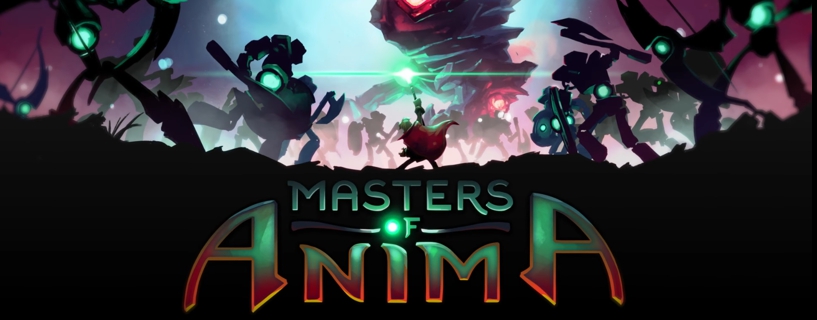Masters of Anima is a well produced indie RTS battle game using only a small set of varied mechanics to provide a challenging experience. It also kinda kicked my butt. Just a little.
Type: Single-player
Genre: RPG, Action
Developer: Passtech Games
Publisher: Focus Home Interactive
Release date: 20 Aug, 2017


A surprising little RTS game
Masters of Anima, developed by Passtech Games and produced by Focus Home Interactive, is likely one of the few Pikmin style games on PC that I’m aware of. I’ve read comparisons to Overlord and Diablo, but in my eyes it is a fantasy battle game using the Pikmin RTS style of gameplay as its core battle setup. It is not like Overlord because it isn’t as puzzly, the main character is not as involved in direct combat, its significantly less quirky, there are far fewer environmental obstacles, and it has substantially less heavy graphics involved. The comparison to Diablo is also not applicable because nothing about the gameplay plays like Diablo other than the isometric viewpoint and clicking on things. I’m quite surprised how it manages to pull off the fantasy combat with Pikmin mechanics. For those either used to Pikmin or complete newcomers to the genre, it’s going to take a bit of practice regardless. Perhaps RTS veterans will breeze through this game, but it has a slightly higher learning curve than I expected. That said, the challenge is always doable. I personally was discouraged several times when playing, but once I figured out a method of strategy, I’d knock down several bosses in a row. That said, I’m still pretty bad at it with only a handful of S or A ranked battles. Masters of Anima is not overly complex and definitely has a slimmed down RTS feel to it compared to say a Warhammer game. RTS fans may think it’s too simple in it’s setup, but it very much holds true to that Pikmin game style while being surprisingly harder to beat than you may think it is. The secret that Masters of Anima hides is that it does a deviously clever job of looking inconspicuous, but once you start fighting you find an utter maelstrom of RTS management at a fairly rapid pace. I loved it and kept kicking myself when I failed because it was always my own fault, not the game’s fault. If you like games where you micromanage your fighters against bosses while keeping an eye on resources from depleting in real time, this is a game worth checking out.
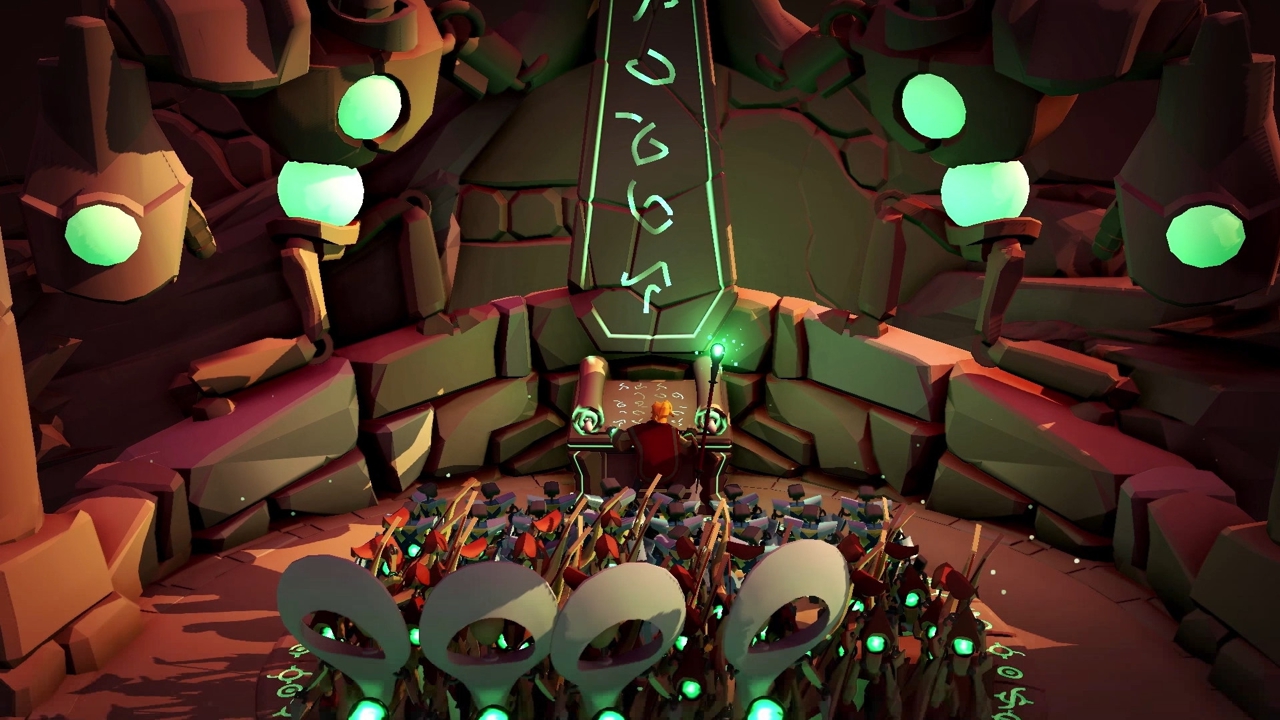
Story
I want to make a quick note here, the voice acting in the game carries the story quite well. Kudos to the voice actors and the recording studio because it brings the storytelling to another level, even with the commonly used theme of saving a girl from a bad guy and a script that isn’t exactly King Lear. It’s well acted and the actors do their very best, which is all you can ask for in a game to be frank. I’m applauding the actors right here. Clap. Clap. Clap.
There is a backstory about a group of people called Shapers who, with the help of a kind-hearted goddess, save the world from an angry mountain called Mount Spark. They use Anima, characterized by green orbs of energy found in plants or pottery, to bring soldiers to life from the raw earth and use them to fight the wicked Golems created by Mount Spark, which are also made of earth but with an evil red energy. During the course of the intro level, we meet our protagonist, Otto, who must save his sundered bride to be from the clutches of a seriously badder than bad antagonist named Zahr. Only by unlocking the secrets of the Shapers and using them to defeat the Golems made by Zahr will Otto be able to get his fiance back and save the world. I like the Anima magic angle, but the rest is pretty much standard issue damsel in distress stuff. That said, I’m grateful for the voice acting and it honestly does help move the game along well. There are no weird holes or crazy plot branches, but it’s entertaining. I didn’t skip through the dialogue once.
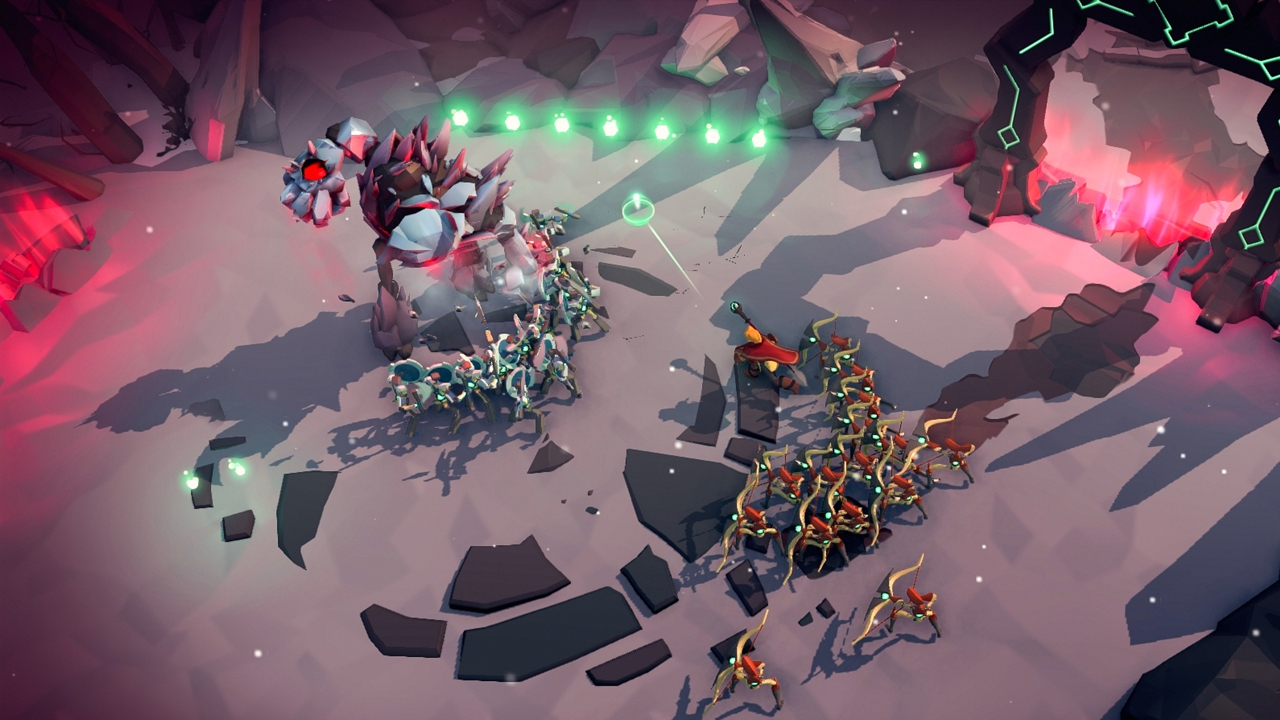
Gameplay
Combat
The main focus of Masters of Anima is on the quick paced RTS combat. While traversing the game world, you won’t encounter any actual enemies other than environmental hazards. Instead, once you find an enemy you’ll be locked into a battle arena with nothing but your Guardian soldiers to fight with and a fairly useless magical staff. Every combat situation is a boss, whether it be a mini-boss or a main one. You obtain soldiers by creating them with the Anima orbs you collect. Once they exist, they’ll follow you like a little herd of lost puppies. The creation of your fighters is done in real time on the field of battle as well as when you are walking in the game world, so it’s best to have an army of soliders pre-made and ready to go before walking into strange areas. You can select them as a group, or pick out small sections to perform individual tasks both on and off the battlefield. You are a micro-manager trying to win the day and strategically have free reign to figure out options, it’s sweet as hell.
There are five classes of Guardian soldiers unlocked through the course of the game, with the last one being around the halfway mark. Protectors are your primary infantry soldier and keep bosses busy with melee attacks. There are also Sentinels that work as archers for your main offense, Keepers who drain the Anima from bosses and provide some health, Commanders which are larger infantry that work as a battle-cry area extender, and Summoners that create their own little infantry soldiers. It’s up to you to micro-manage how many of each unit to make, their position, and when to place them in an area. All this happens with seconds ticking on the clock because if you don’t begin to damage your boss quickly, you will be attacked by incoming lava and lightning strikes on top of the boss attacks.
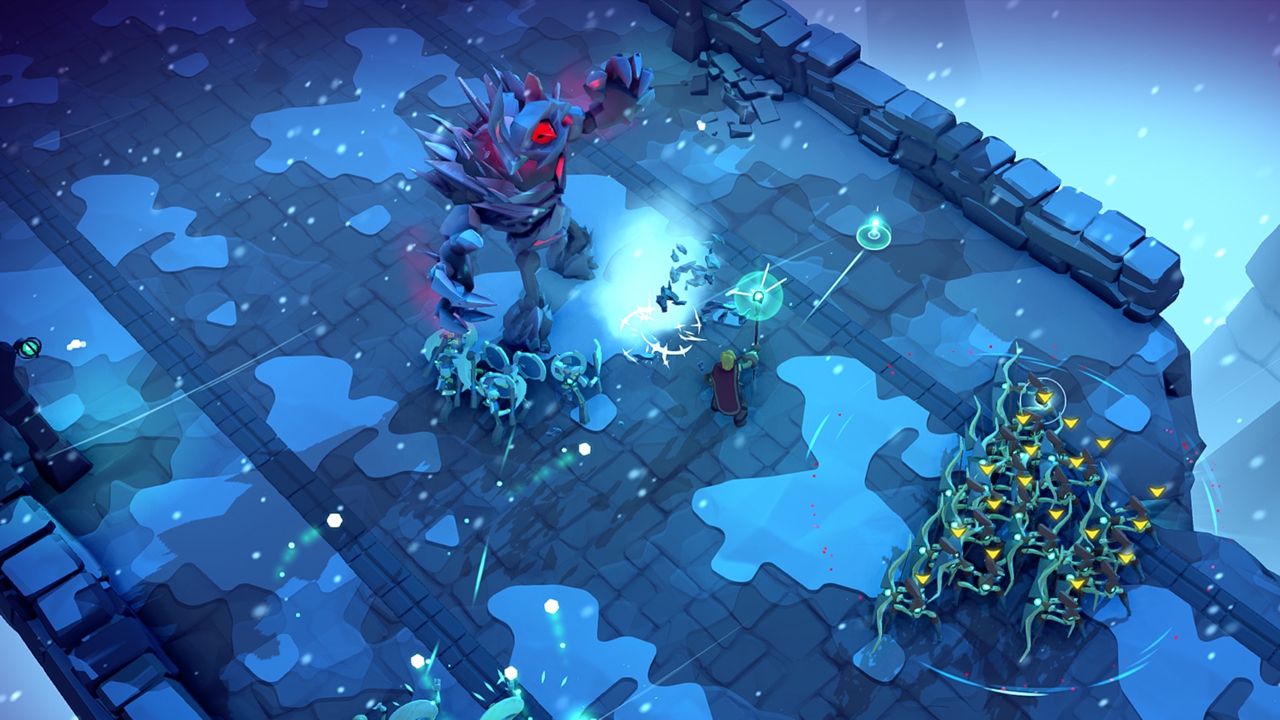
It sounds simple, right? It is not at all simple. In the few RTS games I’ve played, I’ve got some time to maneuver and watch how a battle unfolds to make some momentary decisions. This is not the case with Masters of Anima, it’s substantially faster where your Guardians are under a constant barrage of damage within seconds of the battle. You must make your flanks and get into position right away, then plan to move them every five seconds in order to dodge an incoming attack. Selecting them is what gets tricky because you often have to select one group at a time and it becomes a dance of moving the right ones at the right time while your hands communicate with your brain in a giant multi-tasking combat frenzy.
Move your archers here, then oh-no they are about to all be destroyed and I have to move them, but I selected the wrong ones and now I moved my healers and all my archers are dead. Sigh, and now I have half the Anima I had before and dammit now all my healers are dead too. Often I’d attack with my Protectors first and figure out a flanking method, moving my priority Guardians as quickly as possible to avoid getting them squished by the much larger Golem bosses. Sometimes, it’s a simple attack rotation. Other bosses break up into smaller bosses so that you have to work in micro-groups of Guardians, or the boss attacks so fast you have to change out your Guardians to trap the boss while you figure out a strategy on the fly with a buffer of expendable Guardians. You can attack with Otto as well, which works okay a bit early on but eventually Otto takes too much damage when doing this and the amount of damage he actually makes against a boss is pretty dismal. I use Otto to attack as a last resort for the most part.
The bosses are varied fairly well, but their types of attacks are nearly always the same with the occasional super attack here and there. I didn’t find very many unique bosses, just harder versions of the same ones such as one with a gun, one that heals other mini-bosses, one that rolls over everyone in a line of sight, one with spin attack, one that crawls from underneath and crushed everyone and so on. It would have been nice for the attacks themselves to vary more rather than change out the type of boss all the time.
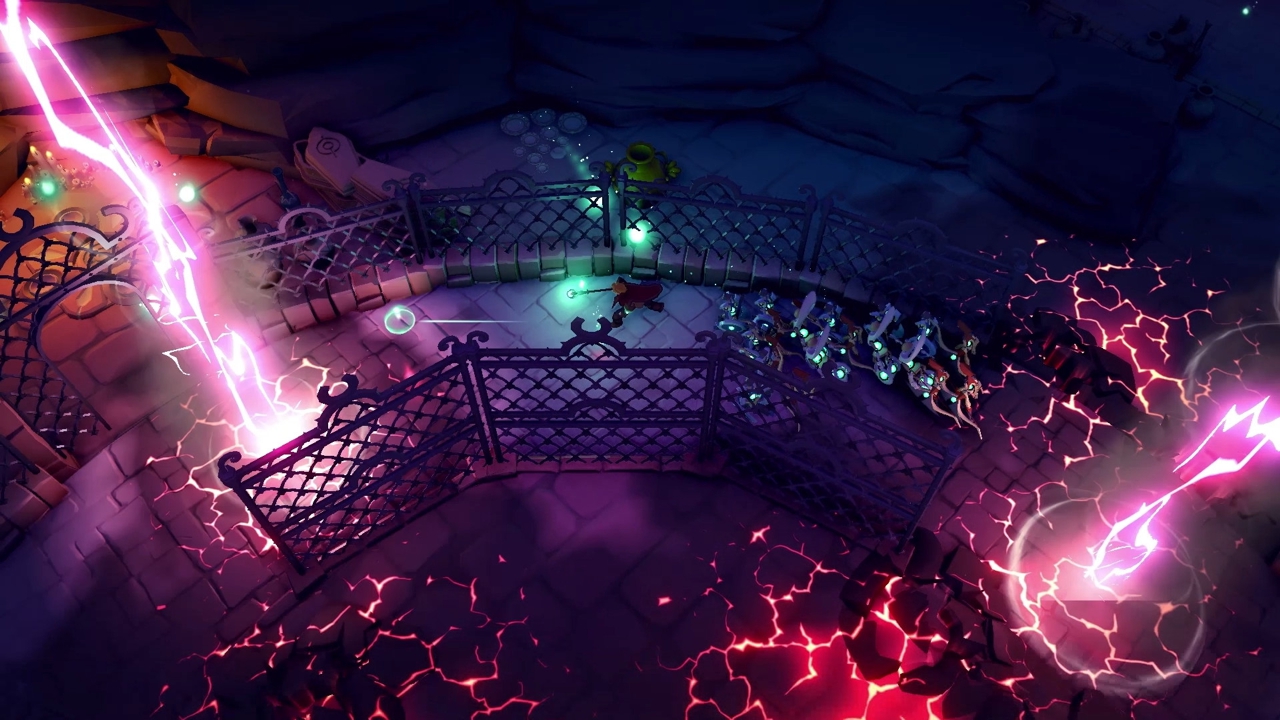
The AI is adequate and not overly complex. It’s the design of the boss attacks and the pace of the gameplay that keep it tense because you look at it and realize it’s totally doable, just that moving the right guy at the right time can be a tough challenge. You earn every battle in this game. The combat durations are quite short, but can potentially take an hour because either you can do it or you can’t. Thankfully, you don’t lose anything when you die or it would be rage quit city. As far as I can tell, there is no level of difficulty to select, it’s just a bit hard and there is nothing you can do about it. If you don’t enjoy RTS games, this game is fairly easy to maneuver in and get the hang of in a sort of a beginner RTS manner, just that it is not easy to win every battle and you have to keep a cool temperament if possible. This makes me wonder who the target audience is because RTS vets might think it’s too simple while casual players will think it’s a bit too hard. What can be tough is making the right decision of control movements at the right time, because it’s quite easy to grab the wrong group of Guardians. Also, the time limit can be tough to overcome because if your Golem stays strong for too long, the whole battle arena will erupt in traps and lightening strikes, making it deadly even to simply pick up more Anima orbs around you.
You have battle-cry techniques which even the playing field quite a lot because it basically supercharges your Guardian attacks for a few seconds. I find it’s best in very large groups where you could potentially take out a Golem in three hits or so. That said, some Golems are designed to break that up and not allow you enough time to get off a battle-cry, thus making you divy up your army into tiny units in order to avoid heavy losses. Other Golems have weak spots noted by a blue chain-link and if do a battle-cry at the right moment it will stun them for a bit while you can attack hard. I have to say that sometimes my battle-crys did not register even though I was in front of a Golem. That was frustrating, but perhaps I’m still doing it wrong. The whole battle-cry technique is decently thought out yet can’t be spammed because it uses up your Anima.
An epic battle may last all of five minutes, but might take 30 minutes- 1 hour of attempts. Overall, I found the combat well balanced even though fighting the bosses is no laughing matter. Nothing feels unfair or poorly designed, but it’s not going to be a cakewalk. Expect a moderate challenge. With every new Guardian, you will have to demonstrate proficiency with it, so it forces you to learn how to play with your entire arsenal as well.
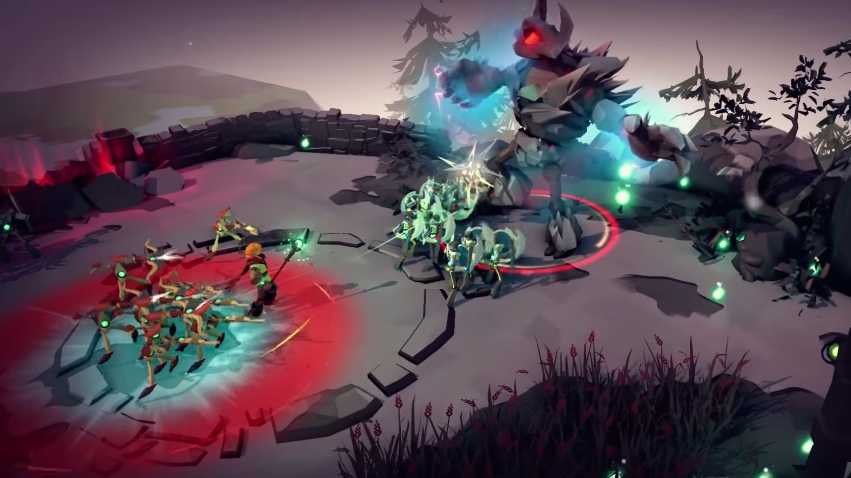
Resources
Otto stores up Anima magic from the environment to create his own soldiers to fight against Zahr. This is his one and only resource as it is used over and over again throughout combat. Having enough of it on hand is key to beating this game and rushing into a fight without full stores can sometimes prevent you from getting very far without back tracking to re-supply. There is plenty to be found throughout the game, and I never ran out of it in the general area. What has to be noted here is that you absolutely must manage how much of it to use at a given time in battle because once a fight starts, you will be unable to pick up any extra. On top of that, if a soldier dies during a fight you will not get the full amount of Anima back, you only get a fraction of it. There is no way to simply run into battle and use it up all at once because you will be unable to replace your soldiers after awhile and have nothing else to work with as your boss simply kills you off. Keeping an eye on the amount of Anima you have while doling it out at the right time is paramount. Unfortunately, this involves dying many times to get the hang of it. For some, this may get frustrating. I have to say, though, the game is never unfair and when you die it is your own fault, not the game’s mechanics failing. There are also Keepers which can significantly increase your Anima supplies to the point where it makes or breaks a battle. The sad thing is they are incredibly easy to kill and often are the first Guardians to die, so you are constantly making more as fast as you can.
Health is another thing you must take care to manage well. Since your Guardians are destructible from the get go, keeping yourself away from projectiles, boss attacks, or traps is essential. Often, I’d overlook this and simply run all over the place collecting Anima and keeping my troops on the field, only to get knocked down. A few bosses can kill you in just a few hits, so you’ve got manage your health as well as the Anima, troops, and battle-cries.
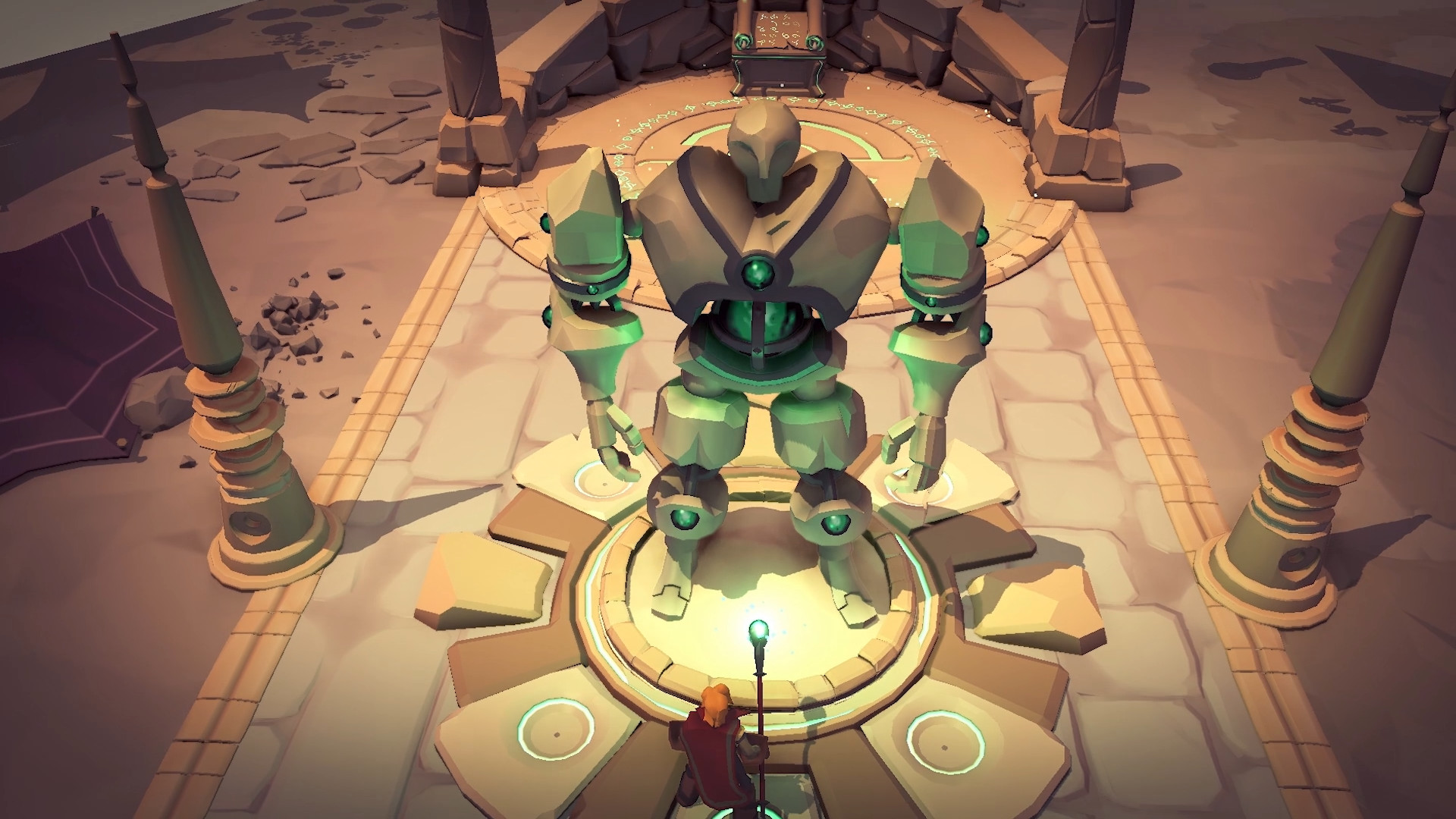
Progression/Controls
My biggest beef with Masters of Anima is the way in which you level up. If you don’t look at every nook and cranny for all the secrets and health upgrades, then you are going to have a lot of trouble. You’ll end up under-leveled and in this game you need every bit of XP you can get. So, make sure to explore every square inch of an area to get all the hidden XP, tablets, level ups, and health upgrades.
The levels will eventually vary both graphically and even environmentally as you sally forth to save your bride to be. You’ll have a big boss at the end of each level after beating a handful of mini-bosses prior to that and in some cases a fast paced race through obstacles. With this, you have a bit of freedom. Perhaps a bit too much, because you can potentially skip a few mini-bosses or hidden areas and lose all that precious XP left behind simply by going forward to the end of the level. I did that and had to restart the game as I got to the Bridge of Tears severely under-leveled and would die repeatedly for over an hour. After restarting and finding a few more hidden areas of XP, I beat the Bridge after just two tries.
At the end of the level, you are awarded Skill Points to upgrade your Guardians or even yourself. The downside is that if you performed poorly, you won’t get as many skill points and lose out on the opportunity to become more powerful. I upgraded the Sentinel archers and Keepers the most since they were my primary focus in battles. Off the battlefield, you’ll find some puzzles in the game world yet they are moderate at best and often incredibly simple. I never felt like a puzzle was a challenge in the least, so all the focus is with those boss battles.
I thought the game controls are so-so, personally. It’s quite a lot to do on a controller in the heat of battle with R1 or L1 to move between ranks and RT+A to make more, RT+X to battle cry, and so forth while pressing B to have them follow or RT-B to kill them off before a Golem kill them in one fell swoop, and very easy to mix up the selection of Guardians under duress. I tried on keyboard, and actually enjoyed the use of the mouse, but the rest of the controls were not all that easy to work with. I stuck with a standard Xbox one controller instead and it’s adequate, but I I often got anxiety-confused when to use what control and had to think for 2 secs sometimes as which button to use, only to get mowed down while my brain tried to catch up.
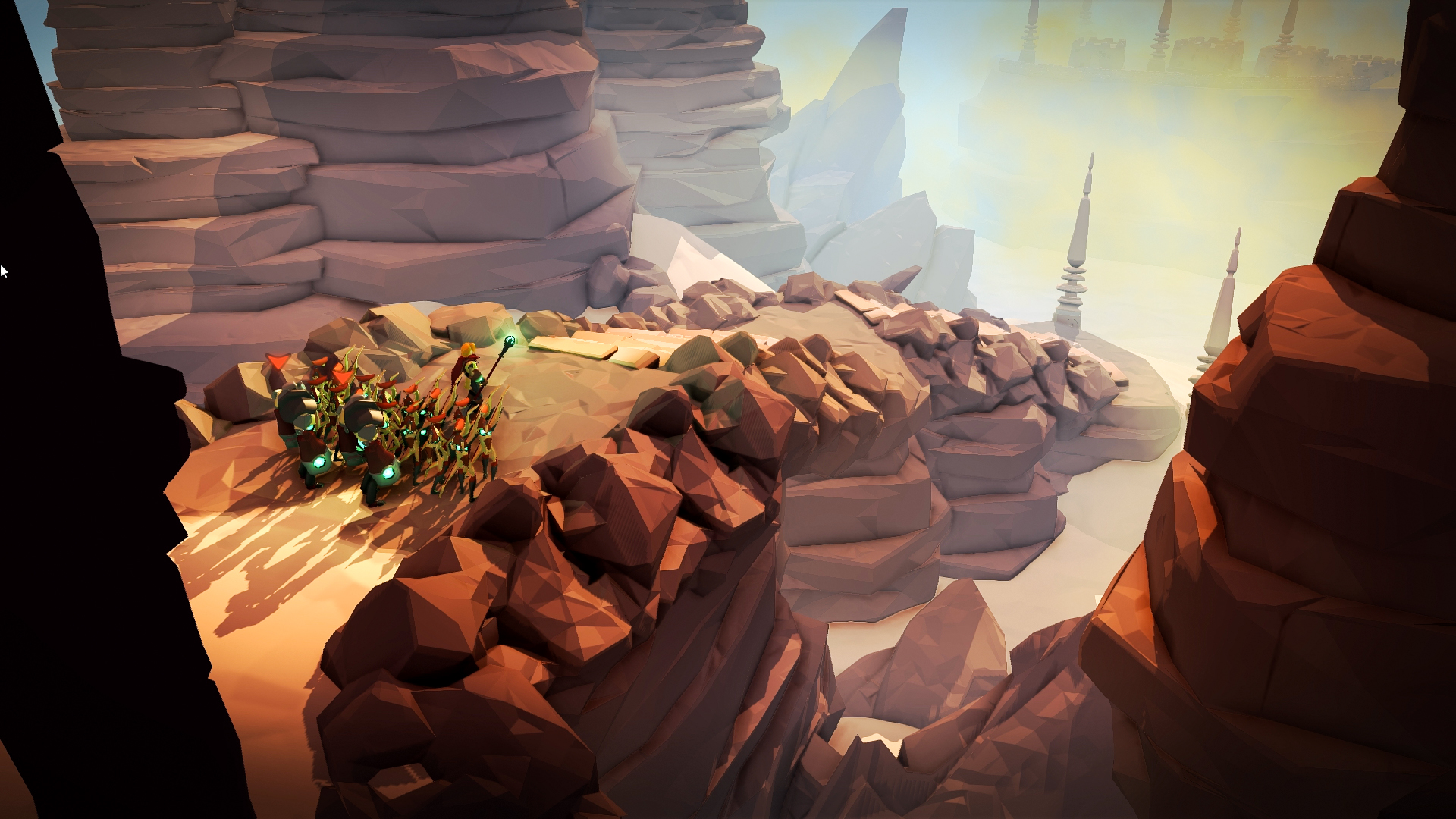
Graphics/Sound
The presentation for the graphics is a pleasant experience overall. It reminded me of Epistory in both the way the levels were laid out, the movement of the character, and overall appearance in a very artistically colorful way. It has a charming graphical look to it that used a bright color palette and some shading to bring about a beautiful world graphically without trying to push any artistic boundaries. It feels like the focus is entirely on the RTS component of the game and keeping the frame-rate smooth and in that respect it delivers quite well. On my mid level PC, I got a buttery smooth 60FPS for the entire game at 1080p, it’s optimized as far as I can tell.
As I noted above, I absolutely enjoyed the voice acting. The music, less so. It felt like standard fair fantasy music and was repeated throughout the game. If anything felt compromised on, it is the music. Sounds effect are fine and adequately inform the player of events going on and about to happen. It’s just the music itself that I felt sounded like every other fantasy game I’ve played.
I have to mention the UI is really bare bones. It gives off a terrible feeling to an otherwise good game and I hope they do more than a basic menu filled with green mist as an update. The menu is adequate, but totally needs a makeover in the presentation and appearance.
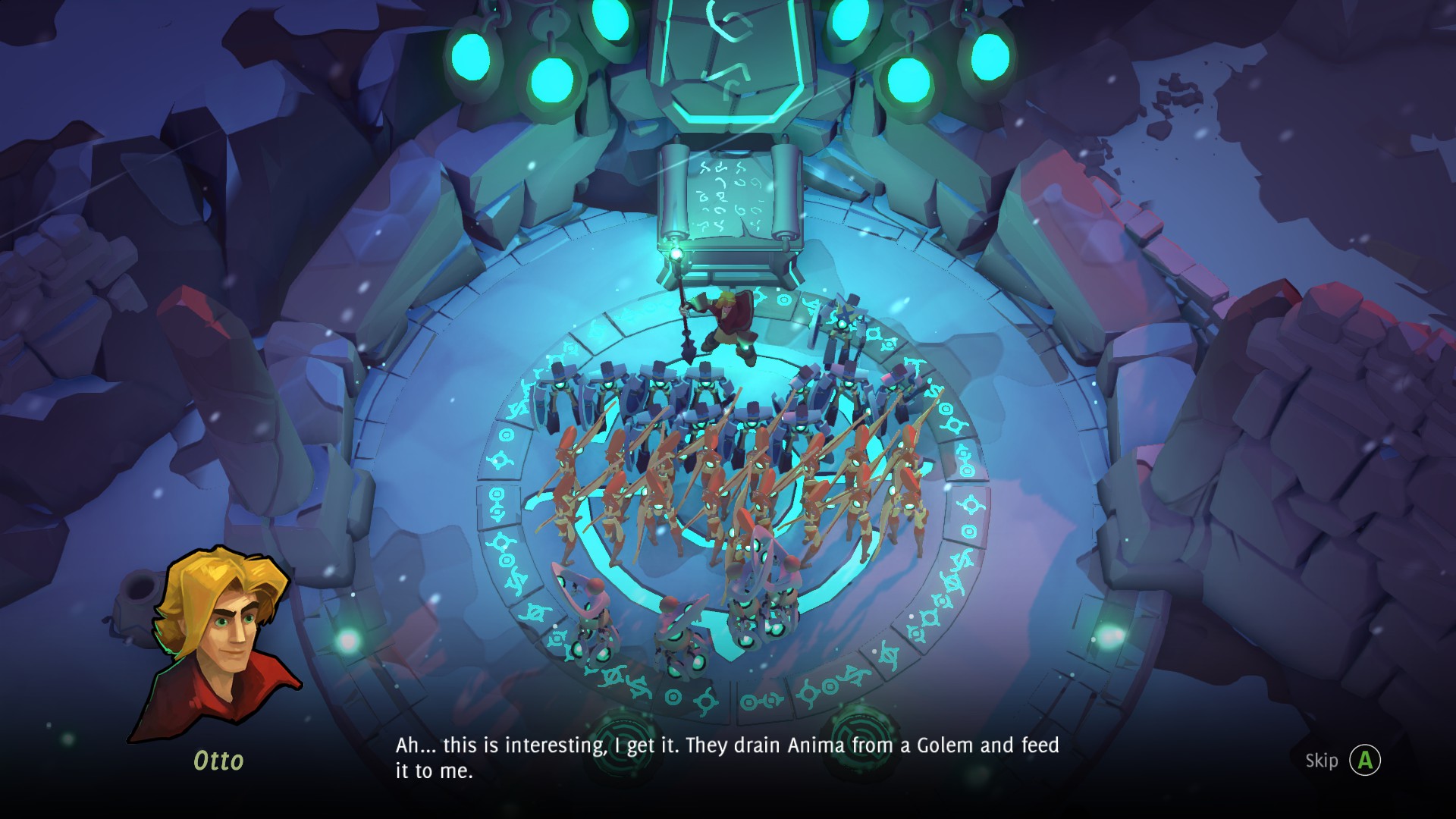
Verdict
This is the hardest Pikmin game I’ve ever played, seriously. Masters of Anima is a fast paced RTS that is not a casual experience, yet is perfectly beatable and balanced well enough that some potentially curious newcomers will be able to pick it up. The difficulty might be a drawback, and I say that as nicely as I can. Casual players will get frustrated with the controls and methodology while strategic gameplay lovers will feel right at home, even if the mechanics are not as complex as most RTS games. It’s the beauty of the Pikmin style of selecting your group of little soldiers on the fly and quickly adjusting to battle circumstances that make this game stand out. While it is not Overlord, and some folks may be disappointed that it is not as similar as they expected, it is very comfortable in the hands of Pikmin vets, making it a wonderfully entertaining fantasy battle game using those very same mechanics. I enjoyed it, even if it kicked my butt, and give it a Save at it’s current price. You could definitely wait for a sale if you don’t know anything about Pikmin, but if you have a middling interest in RTS then add it to your wish-list at the very least.

